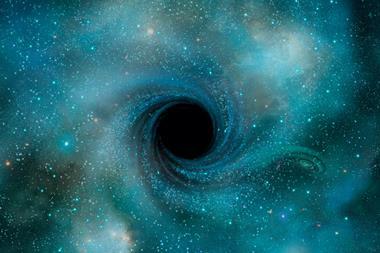Questioning the purpose of science

Few – if any – chemists would doubt today that atoms and molecules exist. Yet, as I have pointed out previously, the validity of this belief is far from evident. In chemistry too, the existence of atoms and molecules was not always uncontroversial. When John Dalton proposed that chemical elements are species of atoms, his theory wasn’t really conceived as literal, not even by himself. He offered a handy visual representation, with images and wooden balls that allowed chemists to understand how molecules are formed. Nevertheless, these were mostly thought of as teaching tools, rather than depictions of real things.
This attitude allegedly changed decisively with Jean Perrin, who claimed to have empirically established the reality of atoms and molecules. The Nobel prize in physics awarded to him in 1926 was explicitly given on these grounds. His achievement was based on his analysis of Avogadro’s number. He showed that approximately the same value is calculated by different methods applied to a diverse range of phenomena, including the diffraction of light by atmospheric molecules, radioactivity, and black-body radiation.1
Based on this, Perrin exclaimed: ‘Our wonder is aroused at the very remarkable agreement found between values derived from the consideration of such widely different phenomena. Seeing that not only is the same magnitude obtained by each method when the conditions under which it is applied are varied as much as possible, but that the numbers thus established also agree among themselves, without discrepancy, for all the methods employed, the real existence of the molecule is given a probability bordering on certainty.’2
Philosophers became particularly interested in spelling out what Perrin exactly meant by this. Many claimed that Perrin’s reasoning was based on the acceptance of a very sensible principle. Namely, that we should believe in the reality of unobservable entities when their hypothesis leads to very accurate empirical results. These results cannot simply be produced by a single experiment or by studying one kind of phenomenon. Instead, they have to be produced within different scientific domains, through the study of diverse phenomena and by employing various experimental methods.
Nonetheless, philosophers have also famously argued against this principle. Bas van Fraassen for instance takes Perrin’s work to only show the empirical adequacy of the hypothesis that there are atoms and molecules. This view is based on a broader philosophical view about science and its aims, called constructive empiricism. As van Fraassen states, ‘science aims to give us theories which are empirically adequate; and acceptance of a theory involves as belief only that it is empirically adequate’.3 When a scientific hypothesis agrees well with our empirical evidence, one need not also commit to the unobservable entities that form part of that scientific hypothesis. A hypothesis may produce results that are in line with what we observe, but this neither requires nor entails that the entities posited by it exist.
Scientists already knew that Perrin’s analysis was strictly speaking false
Van Fraassen supported this argument not only on principled grounds, but also by studying scientists’ views about their work. For example, he claims that scientific realists are mistaken in their analysis of the historical period in which Perrin and his colleagues studied atoms. His view is that scientists were more concerned with establishing a hypothesis that works well with respect to what they observed, rather than with discovering whether the unobserved entities exist. This is supported by the fact that scientists often explicitly acknowledged the falsity of certain of their hypotheses. In the case of atoms, scientists already knew that Perrin’s analysis was strictly speaking false: his models took molecules as perfectly elastic and hard spheres, despite Ernest Rutherford’s insights on nuclear structure. This allegedly shows that science aims at empirical adequacy (namely agreement with observations); to assign any ontological weight to our scientific hypotheses extends beyond this aim and is therefore redundant.
So there are diverging views on whether and in what sense chemists believed in the atomic and molecular hypothesis. These views have an impact on how we interpret the history of chemistry, and in particular the views of the main actors involved in formulating key chemical hypotheses. Moreover, this discussion illuminates how the question of the existence of unobservable entities may affect our views on what science achieves: is it about accommodating what we observe and using theories to manipulate the world in ways that are useful to us? Or is there a deeper purpose to science; namely to uncover the unobserved entities and properties in the world?
While I believe there are convincing reasons to endorse the latter view, scepticists would probably point out that the empirical evidence is consistent with both views about science. So perhaps a better way to frame this is by raising a normative concern. Our challenges with climate change and the pandemic suggest that it is extremely important to reinforce our trust in science. To that end, is there a benefit in conceiving science as uncovering the true nature of things? I believe the answer is a definite yes!
References
1 S Psillos, J. Gen. Philos. Sci., 2011, 42, 339 (DOI: 10.1007/s10838-011-9165-x)
2 J Perrin, Atoms. New York: D. Van Nostrand, 1916, p206
3 B C van Fraassen, The Scientific Image. Oxford: Oxford University Press, 1980, p12

















No comments yet